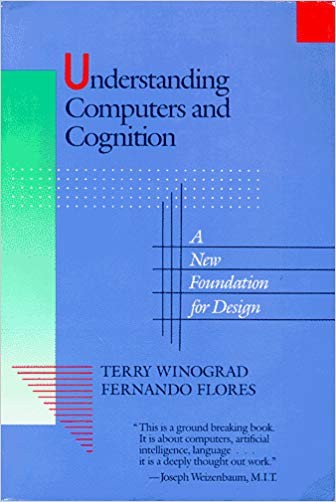Back to Understanding Computers and Cognition
As many of you know, I work at UNAM, Mexico’s largest university. My work is split in two parts: My “full-time” job is to be the systems and network administrator at the Economics Research Institute, and I do some hours of teaching at the Engineering Faculty.
At the Institute, my role is academic — but although I have tried to frame my works in a way amenable to analysis grounded on the Social Sciences (Construcción Colaborativa del Conocimiento, Hecho con Creative Commons, Mecanismos de privacidad y anonimato), so far, I have not taken part of academic collaboration with my coworkers — Economics is a field very far from my interests, to somehow illustrate it. I was very happy when I was invited to be a part of a Seminar on «The Digital Economy in the age of Artificial Intelligence». I talked with the coordinator, and we agreed we have many Economic Science experts — but understanding what does Artificial Intelligence mean eludes then, so I will be writing one of the introductory chapters to this analysis.
But… Hey, I’m no expert in Artificial Intelligence. If anything, I could be categorized as an AI-skeptical! Well, at least I might be the closest thing at hand in the Institute 😉 So I have been thinking about what I will be writing, and finding and reading material to substantiate what I’ll be writing.
One of the readings I determined early on I would be going back to is Terry Winograd and Fernando Flores’ 1986 book, Understanding Computers and Cognition: A New Foundation for Design (oh, were you expecting a link to buy it instead of reading it online?)
I first came across this book by mere chance. Back in the last day of year 2000, my friend Ariel invited me and my then-girlfriend to tag along and travel by land to the USA to catch some just-after-Christmas deals in San Antonio. I was not into shopping, but have always enjoyed road trips, so we went together. We went, yes, to the never-ending clothing shops, but we also went to some big libraries… And the money I didn’t spend at other shops, I spent there. And then some more.
There was a little, somewhat oldish book that caught my eye. And I’ll be honest: I looked at this book only because it was obviously produced by the LaTeX typesetting system (the basics of which I learnt in 1983, and with which I have written… well, basically everything substantial I’ve ever done).
I remember I read this book with most interest back in that year, and finished it with a “Wow, that was a strange trip!” And… Although I have never done much that could be considered AI-related, this has always been my main reference. But not for explaining what is a perceptron, how is an expert system to ponder the weight of given information, or whether a neural network is convolutional or recurrent, or how to turn from a network trained to recognize feature x into a generational network. No, our book is not technical. Well… Not in that sense.
This book tackles cognition. But in order to discuss cognition, it must first come to a proper definition of it. And to do so, it has to base itself on philosophy, starting by noting the author’s disagreement with what they term as the rationalistic tradition: what we have come to term valid reasoning in Western countries. Their main claim is that the rationalistic tradition cannot properly explain a process as complex as cognition (how much bolder can you be than proposing something like this?). So, this book presents many constructs of Heidggerian origin, aiming to explain what it is understanding and being. In doing so, it follows Humberto Maturana’s work. Maturana is also a philosopher, but comes from a background in biology — he published works on animal neurophysiology that are also presented here.
Writing this, I must ensure you — I am not a philosopher, and lack field-specific knowledge to know whether this book is so unique. I know from the onset it does not directly help me to write the chapter I will be writing (but it will surely help me write some important caveats that will make the chapter much more interesting and different to what anybody with a Web browser could write about artificial intelligence).
One last note: Although very well written, and notable for bringing hard to grasp concepts to mere technical staff as myself, this is not light, easy reading. I started re-reading this book a couple of weeks ago, and have just finished chapter 5 (page 69). As some reviewers state, this is one of those books you have to go back a paragraph or two over and over. But it is a most enjoyable and interesting reading.
